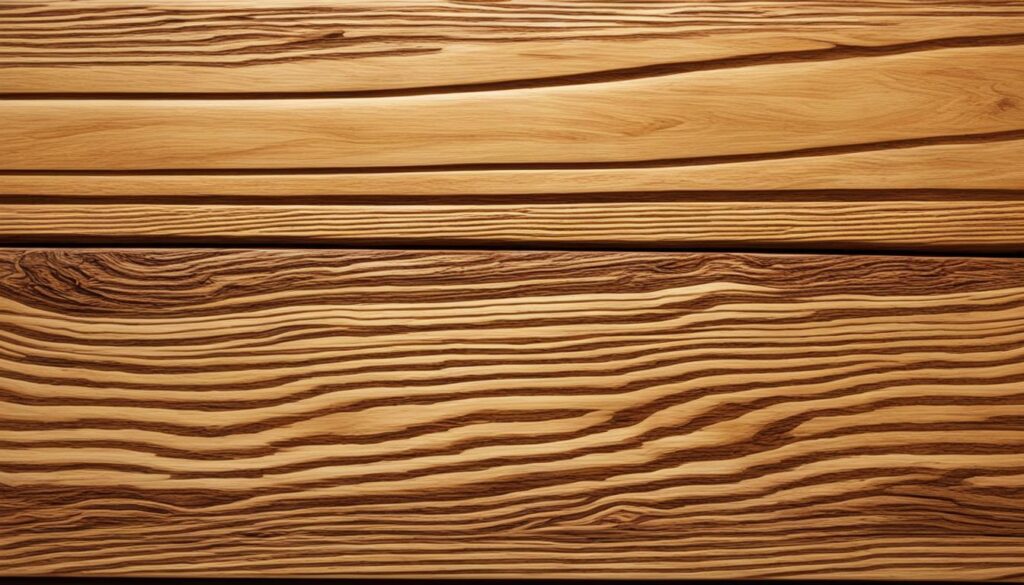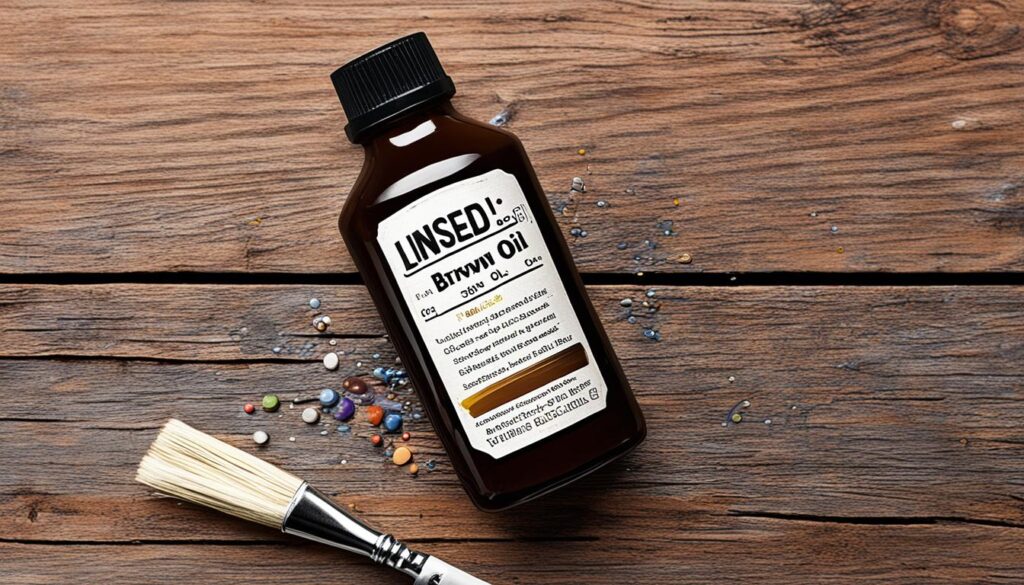Linseed oil, also known as flaxseed oil, is a highly effective and eco-friendly option for wood finishing. It provides a durable, water-resistant barrier while enhancing the natural beauty of the wood grain. Boiled linseed oil is particularly suitable as it dries faster and offers more protection. The application involves multiple thin coats, with buffing between each, to guarantee proper adhesion and longevity. Although it requires regular maintenance, linseed oil offers a more natural and traditional finish compared to modern synthetic options. For those seeking detailed insights into its application and maintenance, further information is available.
What is Linseed Oil?
Linseed oil, also known as flaxseed oil, is a yellowish drying oil obtained by pressing the dried, ripened seeds of the flax plant (Linum usitatissimum). This versatile oil is notable for its polymer-forming properties, which are particularly valuable in various industrial applications.
Rich in omega-3 fatty acids, linseed oil is also consumed as a dietary supplement, commonly referred to as flaxseed oil when used for edible purposes.
In the domain of wood finishing, linseed oil is highly esteemed for its ability to penetrate deeply into the wood grain, providing nourishment and effective wood protection. Its drying characteristics enable it to harden upon exposure to air, making it a preferred choice for enhancing the natural grain and color of wood surfaces. Boiled linseed oil, which includes added drying agents, is often utilized to expedite the curing process, making it suitable for both interior and exterior woodwork.
In addition to wood finishing, linseed oil plays a critical role in the production of artists’ oil paints, where it acts as a binder to grind pigments, contributing to a slower drying rate. Moreover, its industrial uses extend to the manufacturing of varnishes, stains, linoleum, and printing inks, underscoring its multifaceted utility.
Properties and Benefits of Linseed Oil
Building on its versatile applications, the distinctive properties and multifaceted benefits of linseed oil underscore its widespread utility in both industrial and nutritional contexts.
The properties of linseed oil make it an excellent choice for wood finishing. Composed mainly of unsaturated fatty acids such as alpha-linolenic acid, linoleic acid, and oleic acid, linseed oil is classified as a ‘drying oil.’ This classification is essential for its use as a linseed oil varnish and linseed oil wood finish because it allows for polymerization when exposed to oxygen, forming a hard, protective linseed oil coating.
The benefits of linseed oil extend to its use as a linseed oil sealer in woodworking. Its ability to penetrate deeply into wood grains nourishes and protects the material from within, enhancing the wood’s natural color and grain. Additionally, linseed oil provides a water-resistant barrier, contributing to the wood’s longevity. The linseed oil finish is eco-friendly, non-toxic, and food-safe once fully cured, making it a popular choice among natural varnish alternatives.
Moreover, linseed oil’s binding properties make it valuable in various industrial applications, including paints, varnishes, and putties. Its nutritional benefits as a rich source of omega-3 fatty acids further highlight its versatility and utility.
Can Linseed Oil Be Used as Varnish
Utilizing boiled linseed oil as a varnish offers a natural, eco-friendly option for wood finishing that enhances the wood’s inherent beauty while providing moderate protection. Boiled linseed oil, which contains added driers to expedite curing, serves as an effective linseed oil wood sealer. Its application penetrates deep into the wood grain, nourishing and safeguarding the wood from within. This organic wood sealant not only highlights the natural color and grain of the wood but also provides a satin or glossy finish.
A typical linseed oil varnish recipe involves applying multiple thin coats, ensuring to wipe off any excess oil to avoid a gummy residue. Proper curing of linseed oil varnish is essential to achieve a durable finish; however, it is crucial to recognize its limitations. While it excels as a linseed oil furniture finish, offering a warm, natural look, it is not as robust or water-resistant as modern varnishes or polyurethanes.
Raw linseed oil varnish is less commonly used due to its prolonged drying time. Boiled linseed oil varnish, on the other hand, is suitable for both interior and exterior wood surfaces. Despite the need for periodic reapplication, this DIY wood varnish remains a favored choice among those who prioritize an eco-friendly, aesthetically pleasing linseed oil finish for wood.
Applying Linseed Oil as a Wood Finish
To achieve an ideal finish when applying linseed oil to wood, it is crucial to start with a clean, dry, and smoothly sanded surface. Proper wood surface preparation is critical for guaranteeing the linseed oil penetrates effectively and enhances the wood grain. Begin by sanding the wood to a 220-320 grit finish, followed by wiping away any dust with a damp cloth. Allow the wood to dry completely before proceeding.
When applying linseed oil, use a clean, lint-free rag or brush to apply a liberal coat along the direction of the wood grain. Allow the oil to soak in for 10-20 minutes, then wipe off any excess that has not penetrated the wood. Initial linseed oil drying time is approximately 24-48 hours before additional coats can be applied.
For subsequent coats, lightly buff the surface with 0000 steel wool or fine (400 grit) sandpaper to ensure proper adhesion. Apply at least 2-3 thin coats, wiping off excess oil each time. For best natural wood protection, allow the final coat to cure for 2-4 weeks.
To maintain a durable wood finish, reapply linseed oil every 6-12 months, following these wood finishing tips for the most favorable outcomes.
Linseed Oil vs Other Wood Finishes
When considering wood finishing options, understanding the differences between linseed oil and other finishes like tung oil and Danish oil is essential for making an informed decision. Linseed oil, renowned for its natural wood varnish properties, offers several advantages and disadvantages compared to other oil-based wood finishes.
| Finish Type | Advantages | Disadvantages |
|---|---|---|
| Linseed Oil | Enhances natural grain and color; easy to apply; non-toxic; eco-friendly wood finishes | Requires frequent reapplication; longer drying time; tends to yellow wood |
| Tung Oil | More water-resistant; durable; fast drying; minimal yellowing | More expensive; requires solvents for application; not as easy to apply |
| Danish Oil | Fast drying; enhances wood grain; more durable than linseed oil | Contains solvents; may change wood color; adds more sheen |
Linseed oil properties make it a popular choice for those seeking a natural varnish that penetrates deep into the wood, offering linseed oil wood protection from within. However, its need for frequent reapplication and longer curing times can be a drawback. In contrast, tung oil provides superior water resistance and durability but is more challenging to apply. Danish oil strikes a balance with faster drying times and increased durability, albeit with some alteration in wood color. Ultimately, the choice between linseed oil vs varnish alternatives depends on the specific needs of the wood project and personal preferences regarding maintenance and appearance.
Maintenance and Care of Linseed Oil Finishes
Proper maintenance and care of linseed oil finishes are crucial to preserve the natural beauty and protection of wood surfaces. Linseed oil finish maintenance involves regular cleaning and periodic reapplication to guarantee the wood remains nourished and protected.
For routine wood care linseed oil finish, simply wipe down the surface with a clean, dry cloth to remove dust and dirt. For deeper cleaning, use a cloth lightly dampened with a mild soap and water solution, avoiding harsh cleaners.
To maintain linseed oil finish durability, reapply a thin coat of linseed oil every 6-12 months. Lightly sand the surface with 220-320 grit sandpaper before reapplication, ensuring better oil penetration. Apply a thin, even coat and allow it to soak in for 15-20 minutes before wiping off any excess. For added linseed oil finish protection, apply 2-3 thin coats, sanding lightly between each.
Addressing linseed oil finish scratches involves buffing out light scratches with superfine (0000) steel wool and linseed oil. For deeper damage, sand the affected area and reapply oil to blend it seamlessly. Linseed oil finish safety is paramount; make sure rags are dried flat to prevent self-combustion.
With these steps, linseed oil finish upkeep promotes lasting linseed oil finish longevity and preservation.
Welcome to WoodCraftYard.com, your one-stop destination for all things woodworking! I’m Oliver Candler, a dedicated woodworking aficionado and the creative mind behind this virtual woodworking haven. With a deep-rooted love for craftsmanship and a keen eye for detail, I am on a mission to share my passion for woodworking with fellow enthusiasts like yourself.
As a seasoned woodworker, I am committed to providing you with valuable insights, practical tips, and inspiring project ideas to help you unleash your creativity and master the art of woodworking. Whether you’re a seasoned pro or just starting out on your woodworking journey, join me as we carve, sand, and saw our way through the world of woodworking together.
Let’s embark on this woodworking adventure, where every knot, grain, and finish tells a unique story. Together, let’s craft, create, and build something truly extraordinary at WoodCraftYard.com!


